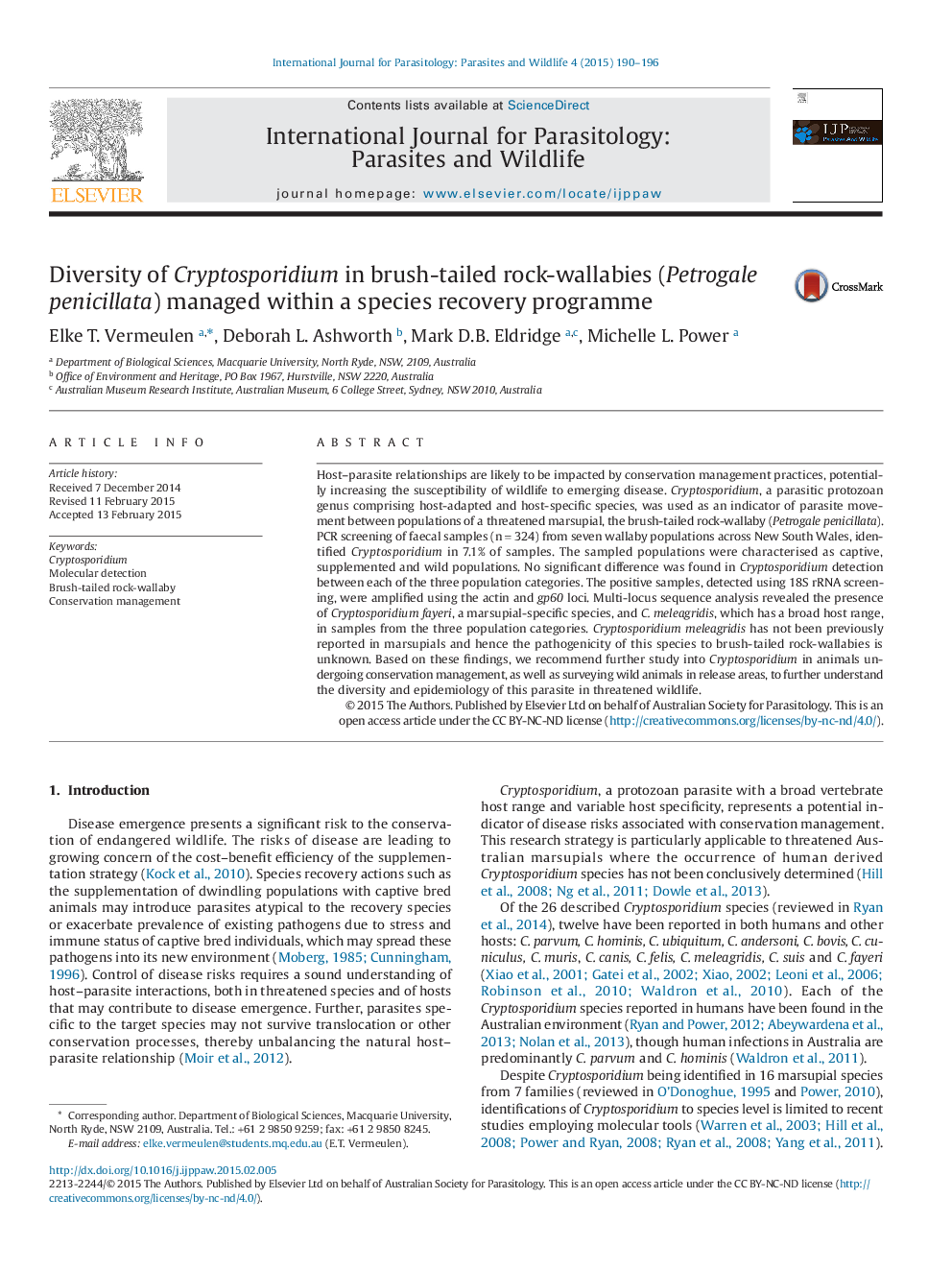| کد مقاله | کد نشریه | سال انتشار | مقاله انگلیسی | نسخه تمام متن |
|---|---|---|---|---|
| 2055253 | 1075737 | 2015 | 7 صفحه PDF | دانلود رایگان |

• Cryptosporidium diversity was investigated in a BTRW as part of a recovery programme.
• Faecal samples from captive bred, supplemented and wild wallabies were screened.
• Cryptosporidium isolates were identified at three gene loci using PCR.
• Diverse species of Cryptosporidium were identified across populations.
• Both specific, C. fayeri, and broad host species, C. meleagridis, were identified.
Host–parasite relationships are likely to be impacted by conservation management practices, potentially increasing the susceptibility of wildlife to emerging disease. Cryptosporidium, a parasitic protozoan genus comprising host-adapted and host-specific species, was used as an indicator of parasite movement between populations of a threatened marsupial, the brush-tailed rock-wallaby (Petrogale penicillata). PCR screening of faecal samples (n = 324) from seven wallaby populations across New South Wales, identified Cryptosporidium in 7.1% of samples. The sampled populations were characterised as captive, supplemented and wild populations. No significant difference was found in Cryptosporidium detection between each of the three population categories. The positive samples, detected using 18S rRNA screening, were amplified using the actin and gp60 loci. Multi-locus sequence analysis revealed the presence of Cryptosporidium fayeri, a marsupial-specific species, and C. meleagridis, which has a broad host range, in samples from the three population categories. Cryptosporidium meleagridis has not been previously reported in marsupials and hence the pathogenicity of this species to brush-tailed rock-wallabies is unknown. Based on these findings, we recommend further study into Cryptosporidium in animals undergoing conservation management, as well as surveying wild animals in release areas, to further understand the diversity and epidemiology of this parasite in threatened wildlife.
Graphical AbstractFigure optionsDownload as PowerPoint slide
Journal: International Journal for Parasitology: Parasites and Wildlife - Volume 4, Issue 2, August 2015, Pages 190–196